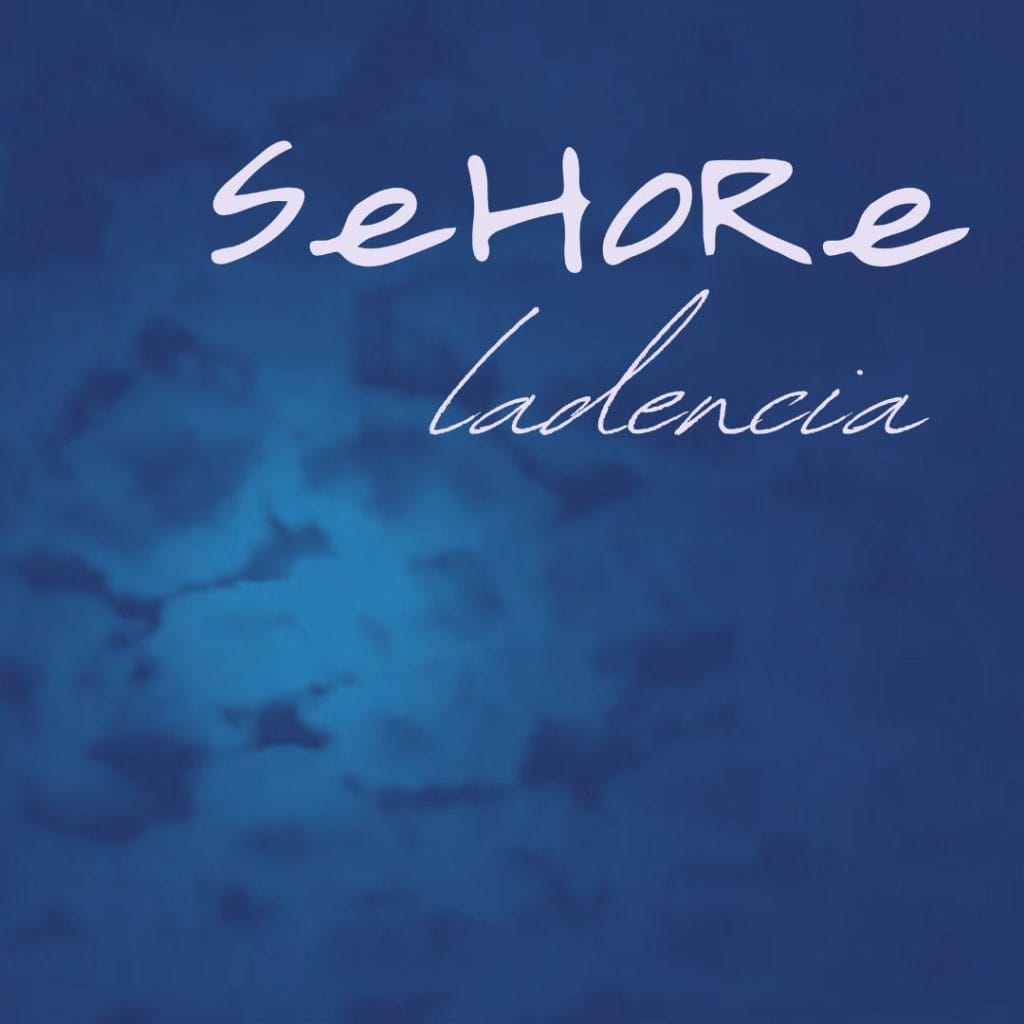
Sehore on Using Kitsch as a Musical Device
We’re always interested in finding artists doing things that we’ve never even dreamt of. Sehore is doing just that.
Sehore’s second album, “Husfikbur“, is a mischievous continuation of 2023’s “Ladencia”, a record that earned a Silver Medal at the 2025 Global Music Awards while also warning the humorless to stay away. Where “Ladencia” cracked the door open, “Husfikbur” shoves it wide, inviting listeners into a hall of mirrors where memory, parody, and sincerity all collide. Its title conjures the reflection of a shop window: sometimes comforting, sometimes exposing, and always layered with fragments of lived and imagined stories.
What makes this album distinctive is Sehore’s deliberate embrace of kitsch not as irony alone, but as a musical strategy. Drawing on Umberto Eco’s analysis of kitsch, Sehore weaves consonance with dissonance, classic with absurd, and intellectual theory with outright play. Bossa nova is reimagined as “bossa velha”, its rhythms weathered by age. Songs like “Locura” obsess over the augmented scale, while “Plástico” rails against pollution with just three chromatic notes. Elsewhere, “Bla bla bla (Cha cha cha)” toys with the philosophy of speech acts, and “Escape Room” folds tension into the minor-major seventh chord.
Recorded at Paco Loco Studio and mastered by Mario G. Alberni, “Husfikbur” feels at once scholarly and chaotic, playful and precise. It’s a project where flamenco rubs shoulders with funk, theory with satire, and an experiment in kitsch elevated to its sharpest edge. We sat down with Sehore to learn more about how to use kitsch as a musical device. Take a listen to the album and read on!
First of all, can you define kitsch for our audience and explain how you use it musically?
It’s the cheesy, the outdated, and the taste for bad taste. That’s how Gillo Dorfles defined it. Since I can’t read sheet music, my self-taught way of playing guitar is to simulate songs from different eras—which is already quite pretentious. And that’s precisely what kitsch is: a substitute born from copying a copy, prefabricated art or second-hand emotion.
That’s why, when I first contacted Paco Loco—the true architect of Sehore, as he’s the one who allowed me to record the albums in his studio in El Puerto de Santa María—and he asked me what my musical style was, I replied: corny.
You’ve said that “Husfikbur“ continues the journey of your first album, “Ladencia”. How does this new album deepen or shift your exploration of kitsch?
The first album was released on January 17, 2025, and the second on September 5—just seven months apart. In fact, it was still being recorded fifteen days ago. The temporal gap is minimal, which is why it’s a continuation of the journey. Maybe that relentless activity is what made this the first interview for Sehore since its inception.
In this case, kitsch is used ironically and consciously, following Umberto Eco’s idea of making the listener feel that they’re feeling. That’s what happens in the atmosphere created in Escape room, which is a walk through non-places: codes that provoke a specific emotional response through the sound, despite its variations and different sections.
It’s an artifice, because the cultural component it incorporates isn’t inherited but acquired. These sounds evoke different emotions depending on the listener’s language, although what enriches also limits. Intentional kitsch is an invitation to reflect, and that’s why no track ends with a fade out dissolving into an unreal distance, but rather with a final chord that can sometimes feel abrupt and sudden. Still, it’s polished by the mastering done at Kadifornia by Mario G. Alberni.
Speaking of that first album, what went through your mind when you started conceptualizing a follow-up to a record that won a Silver Medal at the 2025 Global Music Awards? Did you ever think about surpassing that achievement?
A few weeks after releasing Ladencia, the award came unexpectedly, which was a compliment for a newly created project with no intention of performing live—at least for now. But I didn’t see it as something to surpass, rather as part of a continuous flow. Husfikbur wasn’t born from a desire to compete, but from a need to transform. I don’t believe in progress as a collection of achievements, but as a creative drift guided by something visceral and instinctive. There are differences between the two albums: Husfikbur has less humor, and maybe that’s why it requires the listener to have a sense of humor to face it.
They share the use of invented titles, for example, which go against marketing logic: they’re meaningless signifiers that make it harder to find the album on platforms—I still don’t know how to pronounce the name of the second album, and I barely remember it. But they also invite a freer listening experience, resisting the logic of the algorithm, which seems to operate in a dark and technological Late Middle Ages where escape routes are increasingly scarce. That’s why there’s only one social media account under the band’s name, practically inactive, but required in order to upload the albums online.
How do consonance and dissonance interact in your compositions, and what role does kitsch play in that contrast?
The binary definition of those terms creates confusion and limits them, because for me, dissonance is consonant. Some musical trends overuse one in reaction to the excessive use of the other. That’s why I try to balance them by building bridges between the two, crossing boundaries to discover new sonic flavors. The song Locura is an example of reconciliation between both.
However, there’s a kind of dissent toward kitsch music, because it has settled into consonance to please mass audiences, sidelining dissonance. That’s why the track Plástico is a game built on just three consecutive chromatic notes, simulating Paul Klee’s works, which creates a metakitsch. Similarly, in terms of polyrhythm, the song Armas is in 5/4 time instead of the usual 4/4, which can feel liberating. I believe both terms are compatible, because there’s beauty in disproportion too.

Many tracks use unusual scales: augmented, double harmonic, Hungarian. Did you see these as tools for kitsch, ways to subvert tradition, or something else?
As I mentioned earlier, I have a deep lack of musical theory knowledge because I’ve never studied it. My creative process is purely intuitive—I start by playing electric guitar without an amp, lying in bed. Inspiration can come from pieces from other eras, like the Libre Vermell or the Codex of Las Huelgas. The goal is to recover elements that have been hidden from the ear, as if nothing else existed. It’s more about subverting the contemporary through the ancient.
Sound, as a kitsch tool, comes from playing two songs simultaneously to explore the ambiguous harmonies that emerge from that overlap. It’s an intriguing dichotic listening experience, an excavation into emotional archaeology that leads to those kinds of scales.
You address many serious topics in this album. Do you think kitsch can serve as a form of protest, or is it inherently too playful?
As Cortázar would say, you have to take play very seriously. Kitsch, in that sense, can be a form of protest precisely because it disguises itself as lightness. In Husfikbur, there are tracks that deal with fear, fragility, desire or contradiction. Kitsch allows you to approach these themes through an aesthetic that doesn’t impose, doesn’t preach, but seduces. Play is a subversive act against the mechanical and the serious. It’s an exercise in freedom and resistance. That’s why Charanga, for example, may sound festive, but underneath it’s presenting a tension between what’s celebrated and what’s hidden. Kitsch isn’t escapism— it’s a way to transform what surrounds us without needing solemnity. Along those lines, Bla bla bla (cha cha cha) plays with the idea of speaking without saying. Meanwhile, Mentiras, echoing Raymond Queneau—who tells the same story in 99 different ways— plays with the words from the first sentence to construct new and varied phrases.
Do you see kitsch as a permanent lens for your work, or just a phase in your artistic evolution?
Honestly, I see kitsch as a practical method that has worked well in my previous albums, and I’m using it again in the third one, which will be released in the coming months— although there’s no fixed date yet for the recording. Rather than a defined aesthetic, I see it as a useful and effective strategy for developing songs with multiple layers, in tune with its style. Still, I don’t know if it will be a permanent lens. It might be a specific phase, a moment that responds to this creative stage. Perhaps the most relevant thing is that it allows me to explore contradiction, which I believe is a defining element of the reality we’re living in. But you know… you never know.
Finally, what do you hope listeners feel when they enter the world of “Husfikbur”?
That we’re communicating, even if we don’t know each other and are geographically on opposite sides of the planet—because we share similar experiences, lived moments and inner stories. Some tracks on the album deal with aspects of being human that scare or unsettle me, and I need to share those fears with others, as happens in Armas, Poquito a poco, or Lagrimita. Other lyrics take different angles: desire in Charanga, chance encounters in Serendipia, or the framing of a debate in Energías renovables.
In any case, just like with the previous album, what truly moves me as a result of the whole process is that someone, somewhere in the world, might listen to a song and tell me they felt it was speaking directly to them. That’s why I decided to make the album available on all platforms, as it was done through MusicHunters Records.
Stream “Husfikbur” here.



